Once a fish has taken your fly there's a number of different ways to react. This article will try to help you hook more fish by adapting your strike or hook set.
There's a number of different ways to react when you see or feel that a fish has taken your fly. Some anglers tend to do the same every time this happens and the most common reaction is to lift the rod to set the hook. But that way of striking isn't always the best. This article will try to cover different ways of striking (or not), depending on the fishing situation, the fish and other circumstances.
The yank
Like many other anglers I started fishing with bait, spoons and spinners on a spinning rod, and my father and uncles who were the ones I fished with would have one recipe for hooking fish: lift the rod fiercely and with full power. If you didn't try to pull the jaw off the fish, you weren't yanking hard enough.
My guess is that the idea was that the fish had the hook in its mouth, and would at any given moment spit it out. So speed was critical, and speed was obtained by using force.
The lines of that time were also soft mono lines, which were anything but numb, but rather had the characteristics of a rubber band. So a long haul was necessary to transfer movement from the rod tip to the hook.
During a recent fishing trip I was reminded of this method. An angler was fishing for flatfish on the beach next to us using four rods and baited, weighted hooks. He would cast out, wait for the rod tip to move and then lift the rod gently off the rod holder, tighten the line while lowering the rod tip and then violently yank the long rod towards the sky to set the hook. Judging from his catches this was very efficient, and while not elegant, certainly productive, because he kept on hooking and hauling in fish, which were beheaded, gutted and wound up in a bucket within a minute after leaving the water.
will take... gff/>
The classic dry fly strike
When I first tried dry fly fishing, I pulled dozens of flies out of the mouth of fish that willingly took my clumsily presented and streaming fly in their mouth. Seeing a fish rise, seeing the splash and seeing the fly disappear was simply the trigger that made me yank my rod to set the fly.
The result was that I pulled the fly out of the fish' mouth nine out of ten times, and it took me a while to realize that I missed the fish not because I was too slow, but because I was too fast.
I learned to pause slightly and I learned to gently lift the rod rather than yanking it. Some anglers will tell you to say "God save the Queen" when you see the fish strike and then lift the rod.
A second's hesitation can do wonders for your hooking rate.
My personal theory is that this is simply because the fish will often turn once it has inhaled the fly, and in stead of you pulling the fly away from the fish, you are pulling it against the movement of the fish returning to the deeper water, and that will set the hook nicely in the outer parts of the fish' mouth.
When dry fly fishing you will often have curves in your line, floating on the surface, following the different currents, and the fairly long movement of the rod tip will also help straighten the line and create direct contact between the rod tip and the fly, but there is no reason to rush it.
...say "God save the Queen" when you see the fish strike and then lift the rod.
Nymphing
When nymphing I do differently. I still never yank, but my reaction to any movement in the fly line, indicator or top dry fly is a very deliberate and immediate strike.
My impression is that fish eating nymphs are constantly sampling almost anything nymph-like that passes them, from small branches and leaves to real nymphs - and our imitations. But if you watch video of nymphing fish, you will see them spitting out rejected items in a split second. It's like they feel it and taste it and then decide yes or no in a fraction of a moment.
That means that a fish might have your artificial in its mouth for a very short time, and if you want to set the hook, you have to be fast and determined.
People using the high sticking or Czech nymphing methods will first of all keep a very tight connection to the fly, never allowing any curves or slack in the line, and many will also routinely strike at the end of a short drift, simply because many fish will go for the fly as it lifts off the bottom after a drift.
Personally I rarely fish with this particular technique, but often fish with a floating line and a heavy nymph or two, and make sure that there is as direct a connection between the rod and the flies as possible, with as little curving and slack as a natural drift allows.
Even the least stop or jerking movement of the line tip, a curve that straightens not to mention the feeling of any weight on the line will make me lift my rod to move the fly. If a fish has taken it, it's very likely that my lift will set the hook.
When using a strike indicator, the same applies: if the indicator stops, set the hook.
Doing (almost) nothing
In some types of fishing I prefer to do (almost) nothing before I feel the weight of the fish. When streamer fishing in running water, I keep a very taught line all the time, and have the rod pointing directly in the direction of the line leaving the tip top. This goes for traditional wet fly and streamer fishing as well as for salmon fishing. Casting down and across will stretch the line and leader, and any activity around the fly will be very easy to feel and even see in the line and rod tip.
My experience is that most fish that go for the fly "for real" will hook themselves, and doing almost nothing is my best tactic. When I write "for real" it's because my impression is that salmon in particular will sometimes attack the fly, but not swallow it. They might use the mouth, but not bite over the fly. Such fish are very difficult to hook. Pausing the fly, mending to get it to pass again or inducing some kind of movement can sometimes provoke a more serious attack, but in many cases the fish will just be gone.
I usually fish over the same spot again, concentrating extra on the zone where I felt the fish. Sometimes my impression is that the fish has become more aggravated and can be more determined the second time around. At other times the fish has been put down, and will not react at all.
The essence is that I do as little as possible until I have a positive feeling that the fish is on. Then I lift the rod fairly gently and start fighting the fish.
Some salmon anglers have a small loop between the line hand and the reel, and will let go of this loop when they sense a fish. This should allegedly give the fish time to turn before it feels the fly, but I rarely use this technique, but keep the line tight at all times, and let the rod bend and line curve deliver some protective flex, but still have very direct contact with the fly and - hopefully - the fish.
The strip strike
I was introduced to the strip strike when fishing tropical saltwater, and have adapted it to all my fishing where I retrieve the line: tropical salt, sea run trout, pike and other predatory fish.
When you strip in line, you always have direct contact to the fly and a very fine feeling for what's happening out there. If a fish takes the fly, I simply strip once more. On trout and pike I personally strip gently, because these fish are fairly easy to hook. Other fish like most tropical species and the local mullet have very hard and cartilaginous mouths and require a bit more conviction, but a single, convincing strip will mostly do.
With those fish I pull the line hard a foot or so while keeping the rod pointed at the fish. This serves to set the hook and penetrate the hard mouth, and of course requires some sturdy gear and a fairly strong tippet.
Once the hook is set and I feel the weight, I can lift the rod and fight the fish.
When using the strip strike, you need to watch out for slack line. Keep the rod tip very close to the water or even in the water and pointing in the direction of the fly line - not in the direction of the fish if there's an arc in the line.
The manic hook set
On some species the hook setting requires more than just conviction, and seen from the outside people hooking large tarpon, sharks, giant trevallys, billfish and other large and really robust fish can seem to be almost crazy and manic, pulling extremely hard on the line numerous times with a force that will break anything but the heaviest gear.
The reason is of course that they are fishing big flies for beasts with very, very hard mouths and if they want the thick hook to penetrate anything, it does require a lot of force.
The method is to lean into the rod - often 10-12 weights - induce a small arc in the rod holding it at a 20-30 degree angle to the fish and then pull very hard on the line several times while keeping a very close contact with the fish. This is done as soon as the fish has taken the fly, and often repeated once the fish is under control. In case the hook didn't set the first time, any slack line will mean loosing the fish, and many seasoned big game anglers will set the hook a second time while the line is taught.


This 1 hour video has plenty of examples of all kinds of saltwater hook sets, from gentle bonefish to absolutely brutal Giant Trevallys.
Click the image to watch it.
What I don't do
In my opinion one of the stupidest and riskiest ways of setting the hook is by yanking the rod once or several times at steep angles like 60-90 degrees to the fish or even backwards, away from the fish with the rod shaped as a horseshoe.
I have seen this done many times in real life and on video, and people employing this method seem to loose an awful lot of fish.
Unless you fish a very stiff rod, pulling it while it's bent towards the fish, actually induces very little force at the hook. Modern rods are built to be very subtle and dampen any movement in order to protect the tippet. Whether it's the fish or the rod that moves makes very little difference. The power exerted between the rod and the fish is absorbed by the bent rod, and no matter how much you pull on the 90 degrees bent rod, there's very little power transferred to the hook. That's the whole point of the bent rod.
If you want power, pull the straight line with the rod low and pointed towards the fish, and if you want a compromise between power and protection, hold the rod 20-30 maybe 45 degrees to the direction of the fish. That gives you some leeway if the fish jumps or makes sudden, jerky movements, allowing the rod to bend and giving you a chance to lower it to absorb the most violent pulls.
- Log in to post comments



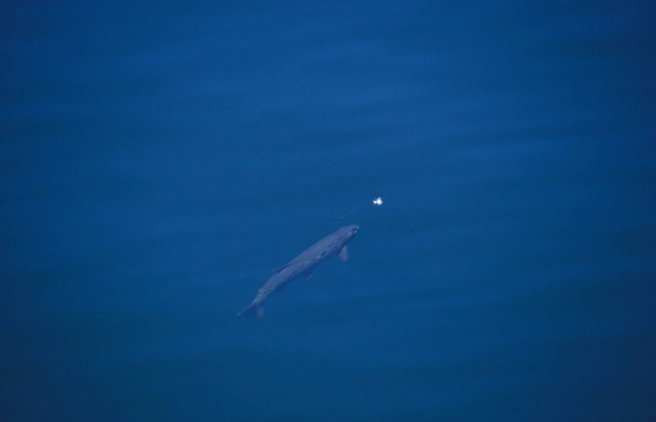
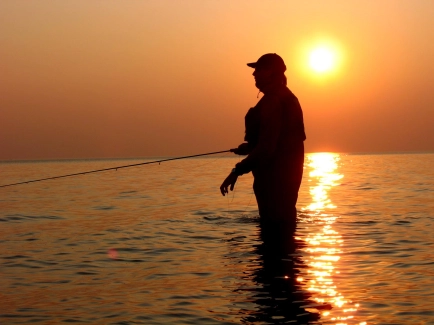

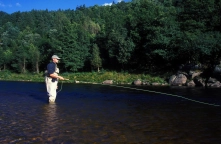
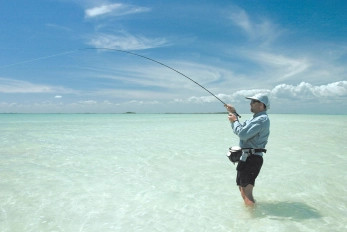

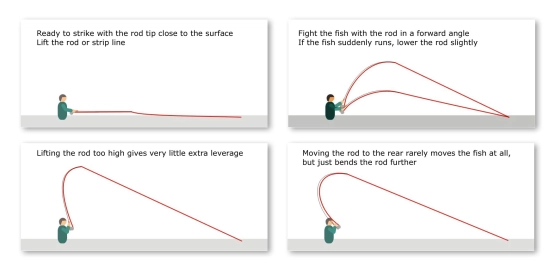



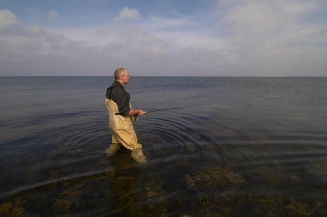





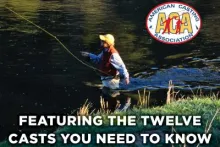

A very helpful artic
A very helpful article explaning the logic and technique. Thank you!..
Jake,
I added an
Jake,
I added an illustration that might help understanding the different angles. I hope this explains things a bit.
Martin
This is an awesome i
This is an awesome informative on different striking methods. The one question I'd have is in the "What I don't do" segment. Im having a hard time visualizing what you mean when you say " the rod...at steep angles like 60-90 degrees to the fish or even backwards" and also "Pull the straight line with the rod low and pointed towards the fish, ...and at 20-30 degrees.." is there anything that could be added to that to help clarify? I really appreciate the help
How did you learn to pause slightly
Striking feels more like a instinctive reaction than something you can delay.
I wonder how you did learn to pause slightly?
Self control!
Peter,
While it might feel like a reflex, it's just something you have learned and which - to to quote Yoda - unlearn you must.
In stead of the knee jerk (or rather elbow jerk) reaction, start thinking when a fish strikes and control the immediate reaction, saying to yourself: take it easy, wait for it... wait for it... now!
And let the strike be more subtle. My best strikes are - as I write - almost no-strikes, where I let the fish do most of the hooking, just making sure that I have good contact with the fly, and don't lift the rod before the fish is actually hooked.
Martin